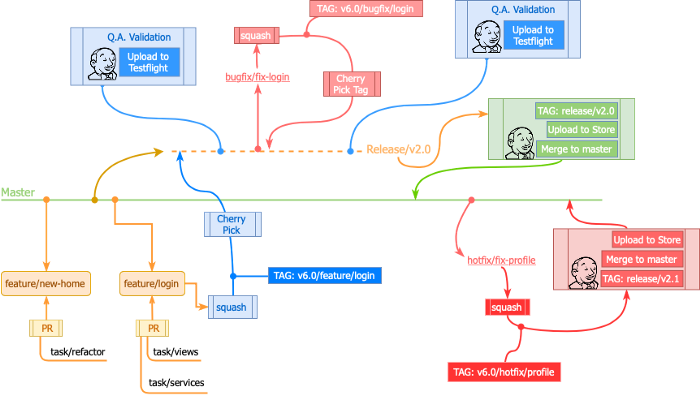The way I've implemented this flow is using PRs. I did it with Azure DevOps, but I'd say that the same can be achieved with GitHub Actions.
When you have a branch that you intent to test and eventually merge to master and release to production, you create a PR from that branch to master. The PR will trigger a pipeline, which will run your build, static analysis and tests. If that passes, the PR is deployed to a test environment where further automated and manual testing can happen. That PR can be reviewed and approved by other developers and, if you need to, by QA after manual testing. You can configure GitHub PR rules to enforce the approvals. Once approved, you can merge the PR to master.
What happens once in master is independent of the workflow above, but most likely a new pipeline will be triggered, which will build a release candidate and run the whole path to production (with or without manual intervention).
One of the tricks is how the PR pipeline decides which environment to deploy the PR too. I can think of three options:
Create an environment on the fly which will be killed once the PR is merged or closed. This is the most advanced and flexible option. This would require the system to publish the environment location to the PR.
Have a pool of environments and have the automation figure out which are free and automatically choose one. The environments could be stopped, so you find an environment which is stopped, start it up and deploy there. Once the PR is closed/merged, stop the environment again.You can publish the environment location to the PR.
Add a label to the PR indicating the environment (ie. env-1, env-2, etc.). This is the simplest option, but it requires that developers look at the open PRs to see which environments are already in use in other PRs to avoid overwriting other people's code.
With all these options, once the PR is created, you can just push new commits to the branch and the environment will be updated.
You also need to decide what you want to do when a new commit is pushed to master. You most likely want to trigger a new PR build to update the environments with the latest master, but you can do this automatically or manually, depending on how busy your master is.


